| Listing 1 - 10 of 35 | << page >> |
Sort by
|
Book
ISBN: 1283497697 9786613497697 8132336240 Year: 2012 Publisher: [Place of publication not identified] University Publications
Abstract | Keywords | Export | Availability | Bookmark
 Loading...
Loading...Choose an application
- Reference Manager
- EndNote
- RefWorks (Direct export to RefWorks)
This book has been written with the purpose of explaining all about Moons of Mars and Neptune.
Astronomy & Astrophysics --- Physical Sciences & Mathematics --- Theoretical Astronomy
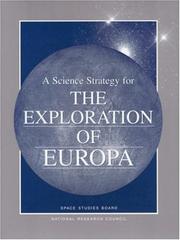
ISBN: 0309064937 0309516579 0585276684 9780585276687 9780309064934 0305064937 0309173043 Year: 1999 Publisher: Washington, D.C. : National Academy Press,
Abstract | Keywords | Export | Availability | Bookmark
 Loading...
Loading...Choose an application
- Reference Manager
- EndNote
- RefWorks (Direct export to RefWorks)
SCIENCE --- Astronomy --- Europa (Satellite) --- Theoretical Astronomy --- Astronomy & Astrophysics --- Physical Sciences & Mathematics --- Jupiter (Planet) --- Satellites. --- Exploration. --- Jupiter II (Satellite) --- Satellites
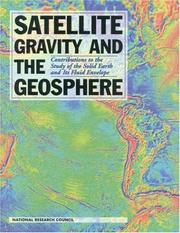
ISBN: 0309057922 9786610210589 1280210583 0309538661 0585037108 9780585037103 9780309057929 0309174767 Year: 1997 Publisher: Washington (D.C.) : National academy press,
Abstract | Keywords | Export | Availability | Bookmark
 Loading...
Loading...Choose an application
- Reference Manager
- EndNote
- RefWorks (Direct export to RefWorks)
SCIENCE --- Physics / Astrophysics --- Satellite geodesy --- Gravity --- Physical geography --- Geodynamics --- Theoretical Astronomy --- Astronomy & Astrophysics --- Physical Sciences & Mathematics --- Measurement --- Satellite geodesy. --- Physical geography. --- Geodynamics. --- Measurement. --- Dynamic geology --- Tectonophysics --- Gravimetry --- Artificial satellites in geodesy --- Geophysics --- Geography --- Geodesy --- Geodetic satellites
Book
ISBN: 1282936190 9786612936197 1400834759 0691146330 9781400834754 9780691146331 9781282936195 6612936193 Year: 2010 Publisher: Princeton, N.J. : Princeton University Press,
Abstract | Keywords | Export | Availability | Bookmark
 Loading...
Loading...Choose an application
- Reference Manager
- EndNote
- RefWorks (Direct export to RefWorks)
For twenty-five years following the Voyager mission, scientists speculated about Saturn's largest moon, a mysterious orb clouded in orange haze. Finally, in 2005, the Cassini-Huygens probe successfully parachuted down through Titan's atmosphere, all the while transmitting images and data. In the early 1980's, when the two Voyager spacecraft skimmed past Titan, Saturn's largest moon, they transmitted back enticing images of a mysterious world concealed in a seemingly impenetrable orange haze. Titan Unveiled is one of the first general interest books to reveal the startling new discoveries that have been made since the arrival of the Cassini-Huygens mission to Saturn and Titan. Ralph Lorenz and Jacqueline Mitton take readers behind the scenes of this mission. Launched in 1997, Cassini entered orbit around Saturn in summer 2004. Its formidable payload included the Huygens probe, which successfully parachuted down through Titan's atmosphere in early 2005, all the while transmitting images and data--and scientists were startled by what they saw. One of those researchers was Lorenz, who gives an insider's account of the scientific community's first close encounter with an alien landscape of liquid methane seas and turbulent orange skies. Amid the challenges and frayed nerves, new discoveries are made, including methane monsoons, equatorial sand seas, and Titan's polar hood. Lorenz and Mitton describe Titan as a world strikingly like Earth and tell how Titan may hold clues to the origins of life on our own planet and possibly to its presence on others. Generously illustrated with many stunning images, Titan Unveiled is essential reading for anyone interested in space exploration, planetary science, or astronomy. A new afterword brings readers up to date on Cassini's ongoing exploration of Titan, describing the many new discoveries made since 2006.
Saturn (Planet) - Satellites. --- Saturn (Planet) -- Satellites. --- Saturn probes. --- Titan (Satellite) - Exploration. --- Titan (Satellite) -- Exploration. --- Astronomy & Astrophysics --- Physical Sciences & Mathematics --- Theoretical Astronomy --- Titan (Satellite) --- Saturn (Planet) --- Exploration. --- Satellites. --- Space probes --- Satellites
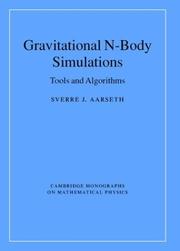
ISBN: 0521432723 9780521432726 9780511535246 9780521121538 0511065442 9780511065446 0511067577 9780511067570 0511535244 9780511059117 0511059116 1107126525 1280414618 9786610414611 0511206046 0511297068 0511169906 0521121531 9781107126527 9781280414619 6610414610 9780511206047 9780511297069 9780511169908 Year: 2003 Publisher: Cambridge ; New York : Cambridge University Press,
Abstract | Keywords | Export | Availability | Bookmark
 Loading...
Loading...Choose an application
- Reference Manager
- EndNote
- RefWorks (Direct export to RefWorks)
This self-contained book presents basic methods of numerical simulation of gravitational systems, with applications in astronomy and cosmology. The first half of the book presents and explains the fundamental mathematical tools needed to describe the dynamics of a large number of mutually attractive particles. Particular attention is given to the techniques needed to model known planetary and astrophysical phenomena such as Hubble motion. The second half of the book demonstrates how to develop clear and elegant algorithms for models of gravitational systems.
Many-body problem. --- Many-body problem --- Problème des N corps --- Celestial mechanics. --- Chaotic behavior in systems. --- Mechanics. --- Astronomy & Astrophysics --- Physical Sciences & Mathematics --- Theoretical Astronomy --- n-body problem --- Problem of many bodies --- Problem of n-bodies --- Mechanics, Analytic
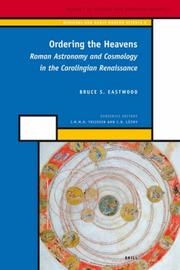
ISBN: 9789004161863 9004161864 9786611936563 1281936561 9047431073 9789047431077 9781281936561 6611936564 Year: 2007 Volume: 8 4 Publisher: Leiden Boston Brill
Abstract | Keywords | Export | Availability | Bookmark
 Loading...
Loading...Choose an application
- Reference Manager
- EndNote
- RefWorks (Direct export to RefWorks)
The astronomy of the Carolingian era has commonly been represented as concerned exclusively with computus , the science of calendar construction as well as arithmetical calculation in general. This volume shows the error of that portrayal by exploring the study and teaching of four Roman texts on astronomy and cosmology in the Carolingian world and the diagrams connected to those texts. As each of these works came into use over the Carolingian era, its contributions merged into a progressively more ordered picture of the heavens. Both eccentrics and epicycles appeared by the 840s. These techniques were subsequently introduced clearly and qualitatively to complete the Carolingian enterprise. The primary tool for understanding this effort is the analysis of their diagrams. Medieval and Early Modern Science , volume 8
520.94 --- Sciences Astronomy History Europe --- Planetary theory --- Astronomy, Medieval --- Cosmology, Medieval. --- Carolingians. --- History. --- Astronomy, Medieval. --- Astronomy, Medieval -- Europe. --- Cosmology, Medieval -- Europe. --- Planetary theory -- History. --- Cosmology, Medieval --- Carolingians --- Astronomy & Astrophysics --- Physical Sciences & Mathematics --- Theoretical Astronomy --- Astronomy - General --- History --- Planets, Theory of --- Celestial mechanics --- Medieval cosmology --- Carlovingians --- Carolinians --- Medieval astronomy
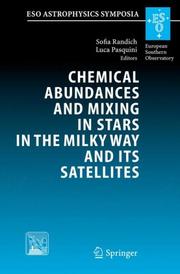
ISBN: 9783540341352 3540341358 3642070566 9786610716913 1280716916 3540341366 Year: 2006 Publisher: Berlin : New York, N.Y. : Springer,
Abstract | Keywords | Export | Availability | Bookmark
 Loading...
Loading...Choose an application
- Reference Manager
- EndNote
- RefWorks (Direct export to RefWorks)
The field of chemical abundances and internal mixing of elements in stars has made large progress in the last decade. Both a wealth of new observational data and in the last years also the inauguration of new theoretical roads have been the stimulus for this ESO Workshop held in Castiglione della Pescaia, Italy, 13-17 September 2004. The proceedings cover topics from chemical abundances in the different components of the Milky Way and in local group galaxies, via observational and theoretical papers on mixing in stars to big bang nucleosynthesis and galaxy formation and evolution. As all volumes in this series of ESO Astrophysics Symposia this one gives a comprehensive state-of-the-art overview of the forefront of research in its area. It is thus a valuable reference for both students specializing in the field and researchers alike.
Cosmic abundances --- Cosmochemistry --- Abondances cosmiques --- Cosmochimie --- Congresses. --- Congrès --- Cosmic abundances -- Congresses. --- Cosmochemistry -- Congresses. --- Astronomy & Astrophysics --- Physical Sciences & Mathematics --- Astronomy - General --- Theoretical Astronomy --- Astrophysics --- Abundance (Astronomy) --- Abundances of elements (Astronomy) --- Element abundance (Astronomy) --- Elemental abundance (Astronomy) --- Elements, Cosmic abundance of --- Physics. --- Astronomy. --- Astrophysics. --- Cosmology. --- Astronomy, Astrophysics and Cosmology. --- Chemical elements --- Astronomical physics --- Astronomy --- Cosmic physics --- Physics --- Deism --- Metaphysics
Book
ISBN: 3642103685 3642103510 1282834541 3642103529 9786612834547 Year: 2010 Publisher: Heidelberg : Springer,
Abstract | Keywords | Export | Availability | Bookmark
 Loading...
Loading...Choose an application
- Reference Manager
- EndNote
- RefWorks (Direct export to RefWorks)
A fundamental question in contemporary astrophysics is the origin of the elements. Cosmochemistry seeks to answer when, how and where the chemical elements arose. Quantitative answers to these fundamental questions require a multi-disciplinary approach involving stellar evolution, explosive nucleosynthesis and nuclear reactions in different astrophysical environments. There remain, however, many outstanding problems and cosmochemistry remains a fertile area of research. This book is among the first in recent times to put together the essentials of cosmochemistry, combining contributions from leading astrophysicists in the field. The chapters have been organized to provide a clear description of the fundamentals, an introduction to modern techniques such as computational modelling, and glimpses of outstanding issues.
Cosmochemistry -- Congresses. --- Cosmochemistry --- Theoretical Astronomy --- Astrophysics --- Astronomy & Astrophysics --- Physical Sciences & Mathematics --- Geochemistry --- Stars --- Physics. --- Astrophysics. --- Nuclear fusion. --- Astrophysics and Astroparticles. --- Nuclear Fusion. --- Fusion, Nuclear --- Fusion reactions --- Fusion --- Nuclear reactions --- Astronomical physics --- Astronomy --- Cosmic physics --- Physics --- Natural philosophy --- Philosophy, Natural --- Physical sciences --- Dynamics
Book
ISBN: 3642110533 3642110541 Year: 2011 Publisher: Berlin, Heidelberg : Springer Berlin Heidelberg : Imprint: Springer,
Abstract | Keywords | Export | Availability | Bookmark
 Loading...
Loading...Choose an application
- Reference Manager
- EndNote
- RefWorks (Direct export to RefWorks)
C. Agostinelli: Sul problema delle aurore boreali e il moto di un corpuscolo elettrizzato in presenza di un dipolo magnetico.- G. Colombo: Introduction to the theory of earth’s motion about its center of mass.- E.M. Gaposchkin: The motion of the pole and the earth’s elasticity as studied from the gravity field of the earth by means of artificial earth satellites.- I.I. Shapiro: Radar astronomy, general relativity, and celestial mechanics.- V. Szebehely: Applications of the restricted problem of three bodies in space research.- G.A. Wilkins: The analysis of the observation of the satellites of Mars.
Celestial mechanics -- Experiments. --- Celestial mechanics. --- Chaotic behavior in systems. --- Astronomy & Astrophysics --- Mathematics --- Physical Sciences & Mathematics --- Theoretical Astronomy --- Calculus --- Mathematics. --- Partial differential equations. --- Mechanics. --- Astronomy. --- Astrophysics. --- Cosmology. --- Partial Differential Equations. --- Astronomy, Astrophysics and Cosmology. --- Differential equations, partial. --- Classical Mechanics. --- Partial differential equations --- Classical mechanics --- Newtonian mechanics --- Physics --- Dynamics --- Quantum theory --- Astronomical physics --- Astronomy --- Cosmic physics --- Differential equations, Partial.
Book
ISBN: 1461454433 1461454441 Year: 2012 Publisher: New York, NY : Springer New York : Imprint: Springer,
Abstract | Keywords | Export | Availability | Bookmark
 Loading...
Loading...Choose an application
- Reference Manager
- EndNote
- RefWorks (Direct export to RefWorks)
“Newton’s Gravity” conveys the power of simple mathematics to tell the fundamental truth about nature. Many people know the tides are caused by the pull of the Moon and to a lesser extent the Sun. But very few can explain exactly how and why that happens. Fewer still can calculate the actual pulls of the Moon and Sun on the oceans. This book shows in clear detail how to do this with simple tools. It uniquely crosses disciplines – history, astronomy, physics and mathematics – and takes pains to explain things frequently passed over or taken for granted in other books. Using a problem-based approach, “Newton’s Gravity” explores the surprisingly basic mathematics behind gravity, the most fundamental force that governs the movements of satellites, planets, and the stars.
Astrophysics. --- Gravitational waves. --- Celestial mechanics --- Gravity --- Astronomy & Astrophysics --- Physical Sciences & Mathematics --- Astronomy - General --- Astrophysics --- Theoretical Astronomy --- Gravitational astronomy --- Mechanics, Celestial --- Physics. --- Planetology. --- Mathematical physics. --- Astronomy. --- Cosmology. --- Astronomy, Astrophysics and Cosmology. --- Mathematical Applications in the Physical Sciences. --- Planetary sciences --- Planetology --- Celestial mechanics. --- Gravity. --- Physical mathematics --- Physics --- Astronomical physics --- Astronomy --- Cosmic physics --- Mathematics --- Planetary science.
| Listing 1 - 10 of 35 | << page >> |
Sort by
|

 Search
Search Feedback
Feedback About UniCat
About UniCat  Help
Help News
News